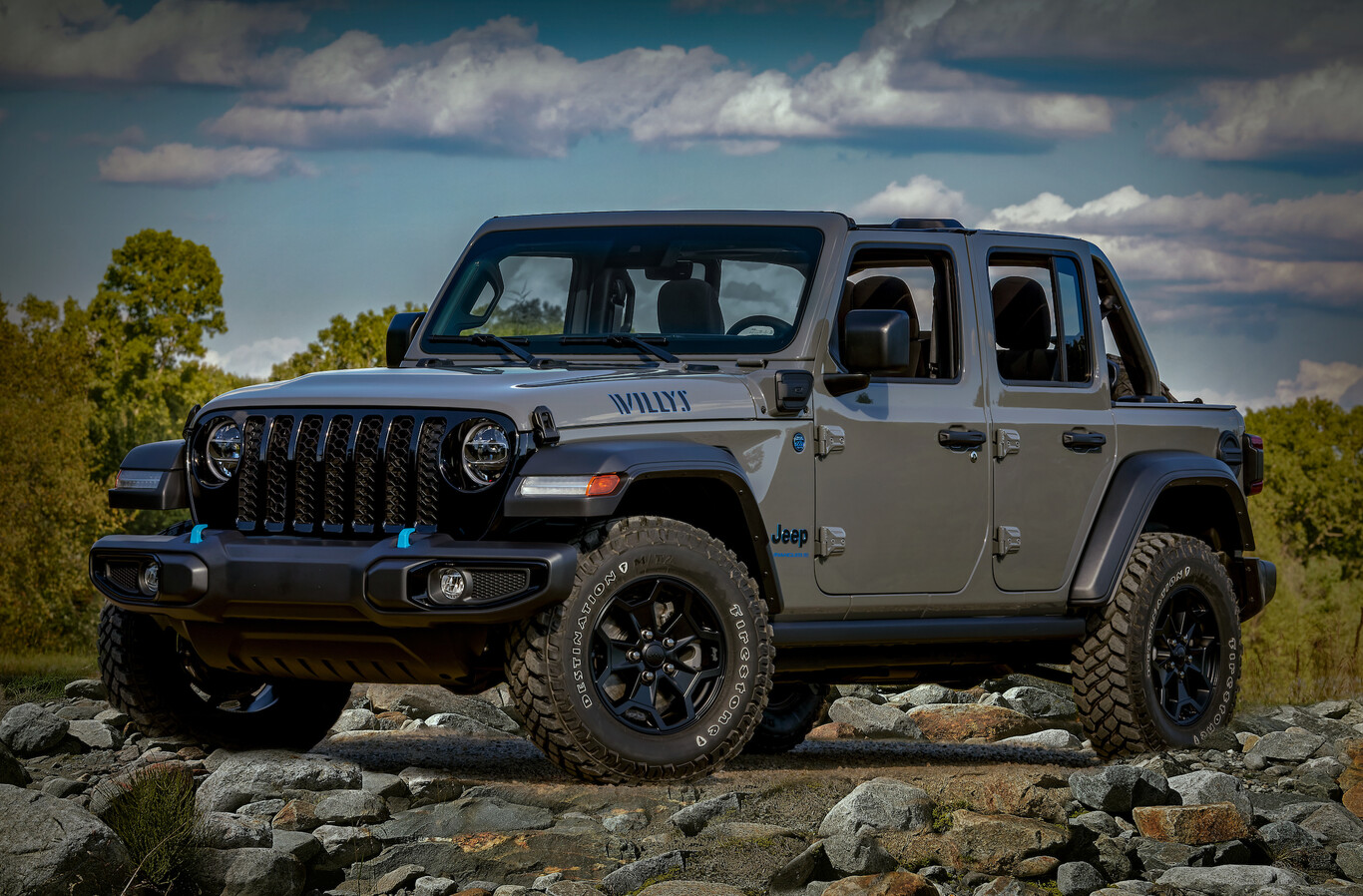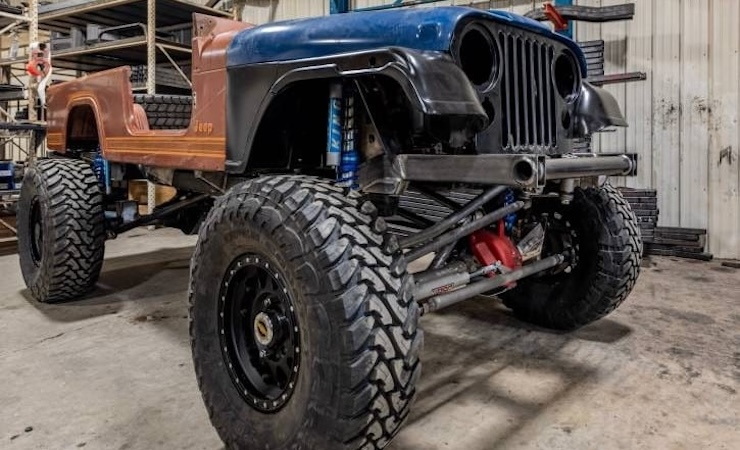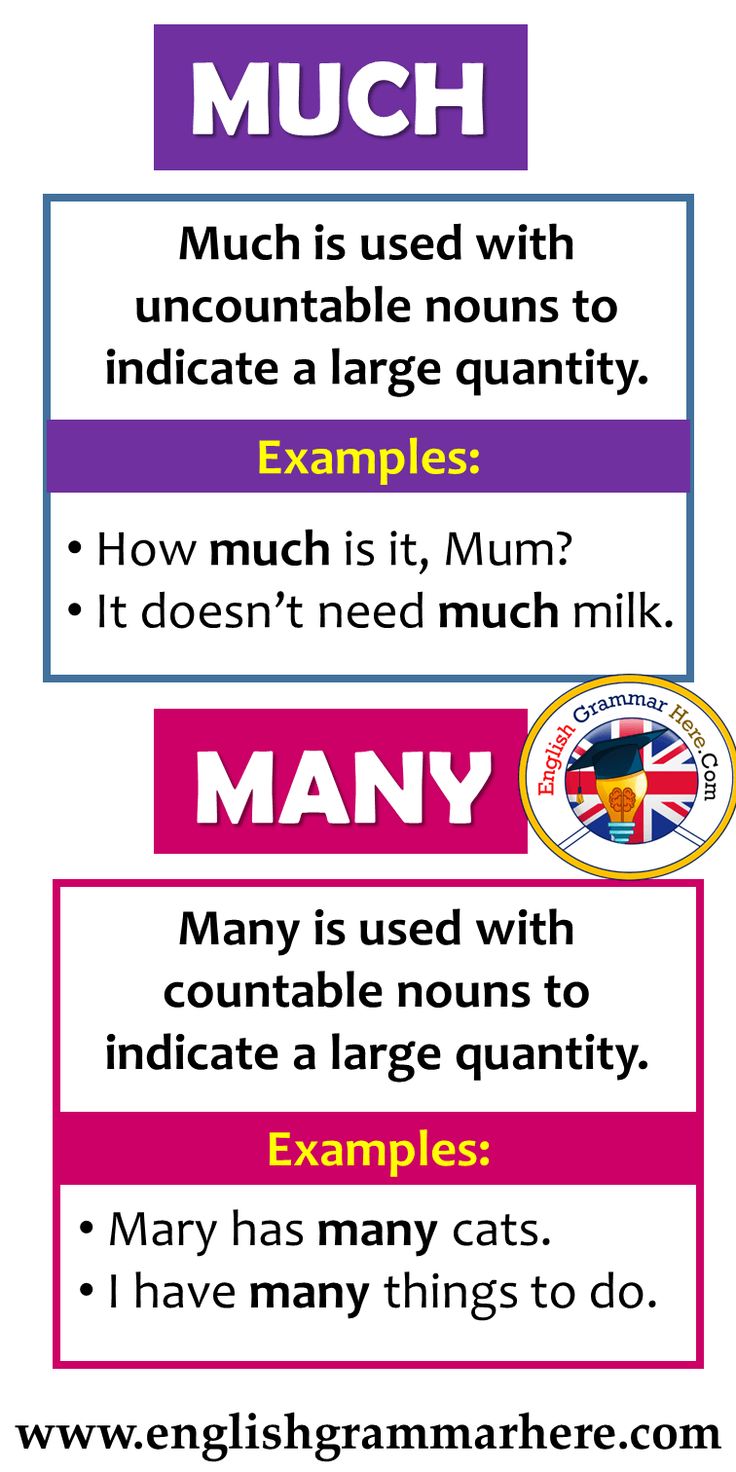Jeep WJ Off Road Tires For Sale: Your Ultimate Guide to Conquering Any Terrain
Jeep WJ Off Road Tires For Sale: Your Ultimate Guide to Conquering Any Terrain jeeps.truckstrend.com
The Jeep Grand Cherokee WJ, produced from 1999 to 2004, holds a special place in the hearts of off-road enthusiasts. Renowned for its solid axles, comfortable coil-sprung suspension, and impressive capability straight from the factory, the WJ is a fantastic platform for adventure. However, to truly unlock its potential and confidently tackle challenging trails, the stock street tires simply won won’t cut it. Upgrading to dedicated off-road tires is arguably the most impactful modification you can make, transforming your WJ from a capable SUV into an unstoppable trail beast.
This comprehensive guide is designed to navigate the exciting world of Jeep WJ Off Road Tires For Sale, providing you with the knowledge, insights, and practical advice needed to make the best choice for your vehicle and your adventures. From understanding the different types of tires to budgeting and installation, we’ll cover everything you need to know to equip your WJ for ultimate off-road dominance.
Jeep WJ Off Road Tires For Sale: Your Ultimate Guide to Conquering Any Terrain
Understanding Your Jeep WJ’s Off-Road Needs
Before diving into the vast array of off-road tires, it’s crucial to assess your WJ’s current setup and your intended use. A stock WJ with no lift will have different tire size limitations and capabilities compared to a modified one with a significant lift and trimmed fenders.
1. Stock vs. Modified WJs:
- Stock WJ: Typically fits up to a 30-inch tire without rubbing, and sometimes a 31-inch tire with minor trimming or specific wheel backspacing. Your choices will be more limited but still provide a significant improvement over street tires.
- Lifted WJ: With a 2-inch lift, 31-inch tires are common. A 3-4 inch lift often allows for 32-inch or even 33-inch tires, possibly requiring fender trimming and adjusted wheel backspacing. Larger lifts (4.5 inches or more) can accommodate 35-inch tires, but this usually necessitates extensive modifications like fender cutting, re-gearing, and upgraded driveline components.
2. Types of Off-Roading:

- Light Trail Riding/Overlanding: If your adventures involve mostly dirt roads, gravel paths, and moderate trails, an All-Terrain (A/T) tire offers a great balance of off-road grip and on-road comfort.
- Mudding/Rock Crawling: For dedicated mud pits, slick rocks, or extreme terrain, Mud-Terrain (M/T) tires with aggressive tread patterns are essential. Be prepared for increased road noise and potentially less comfortable highway driving.
- Hybrid/Rugged Terrain: These tires bridge the gap, offering more aggressive treads than A/Ts but less noise and better road manners than full M/Ts. They are an excellent choice for those who frequently mix on-road driving with challenging off-road excursions.
![]()
Understanding your primary use will guide your tire type selection, directly impacting your search for Jeep WJ Off Road Tires For Sale.
Key Considerations When Choosing WJ Off-Road Tires
Selecting the right tires involves more than just picking an aggressive tread. Several critical factors come into play, each impacting performance, safety, and longevity.
1. Size Matters: Diameter, Width, and Aspect Ratio
- Diameter: Common off-road sizes for WJs range from 30 inches to 35 inches. Larger tires offer increased ground clearance and a larger contact patch, but they also require more power, can stress driveline components, and often necessitate suspension lifts and fender modifications to prevent rubbing.
- Width: Wider tires can offer more flotation in sand and a larger contact patch for grip, but they might rub on suspension components or fender liners without proper wheel backspacing or spacers.
- Aspect Ratio (e.g., 70 in 265/70R17): This indicates the sidewall height relative to the tire’s width. A lower aspect ratio means a shorter, stiffer sidewall, which can be good for steering response but less forgiving over rough terrain. Higher aspect ratios provide more sidewall flex, crucial for conforming to obstacles and improving ride comfort off-road.

2. Tread Pattern and Tire Type:
- All-Terrain (A/T) Tires: Characterized by a moderate tread pattern with siping for wet traction and decent void for light off-road grip. They are quiet on the road, offer good fuel economy, and are excellent for daily driving combined with light to moderate trail use. Examples: BFGoodrich KO2, Falken Wildpeak A/T3W.
- Mud-Terrain (M/T) Tires: Feature large, widely spaced tread blocks with deep voids for maximum traction in mud, dirt, and over rocks. Their aggressive design excels in challenging conditions but often comes with increased road noise, reduced fuel economy, and faster wear on pavement. Examples: BFGoodrich KM3, Nitto Trail Grappler.
- Rugged Terrain (R/T) Tires: A newer category that blends features of A/T and M/T tires. They offer more aggressive sidewall protection and tread than an A/T, providing better off-road capability, while maintaining reasonable road manners. Examples: Nitto Ridge Grappler, Toyo Open Country R/T.
3. Load Rating and Ply Rating:
- Load Rating: Indicates the maximum weight a tire can safely carry. For a WJ, ensure the load rating meets or exceeds your vehicle’s Gross Vehicle Weight Rating (GVWR) when fully loaded with gear and passengers.
- Ply Rating (or Load Range): Historically referred to the number of plies in the tire’s construction, indicating its strength and load capacity. Modern tires use "Load Range" (e.g., C, D, E) to denote equivalent strength. For a heavier vehicle like the WJ and for off-road use where punctures are a risk, a higher load range (e.g., D or E) often provides better durability and puncture resistance, especially in the sidewall.
4. Sidewall Strength: This is paramount for off-roading. A strong, multi-ply sidewall resists cuts and punctures from rocks and debris, crucial when airing down for increased traction. Look for tires with reinforced sidewalls or specific technologies designed for off-road durability.
5. Brand Reputation and Warranty: Stick with reputable brands known for quality and performance. Research customer reviews, especially from other Jeep owners, to gauge real-world performance and durability. A good warranty can also provide peace of mind.
6. Budget: Off-road tires are an investment. While it’s tempting to go for the cheapest option, compromising on quality can lead to premature wear, punctures, or inadequate performance. Balance your budget with your needs and prioritize features that are critical for your specific off-road use.
Popular Off-Road Tire Brands for Jeep WJ Owners
When searching for Jeep WJ Off Road Tires For Sale, you’ll encounter numerous brands, each with its loyal following. Here are some of the most popular and highly-regarded choices among WJ enthusiasts:
- BFGoodrich: The KO2 (All-Terrain) is a legendary tire known for its balance of on-road manners and aggressive off-road performance. The KM3 (Mud-Terrain) offers extreme grip for serious trails.
- Nitto: The Ridge Grappler (Rugged Terrain) is a favorite for its aggressive looks and excellent performance across various terrains, while the Trail Grappler (Mud-Terrain) is a formidable choice for mud and rocks.
- Toyo Tires: The Open Country M/T is a highly durable and capable mud-terrain, and the Open Country A/T III provides solid all-around performance.
- Falken: The Wildpeak A/T3W has gained immense popularity for its aggressive all-terrain design, excellent wet weather performance, and competitive pricing. Their M/T is also a strong contender.
- Goodyear: The Wrangler DuraTrac is a very capable all-terrain with strong winter performance, while the Wrangler MTR with Kevlar offers serious off-road prowess.
- Cooper Tires: The Discoverer STT Pro is a popular mud-terrain known for its aggressive looks and performance, and the Discoverer AT3 family offers various all-terrain options.
- Maxxis: The Razr MT and AT series provide rugged, high-performance options often at a more budget-friendly price point.
Where to Find Jeep WJ Off-Road Tires For Sale
The market for off-road tires is diverse, offering several avenues for purchase. Each has its pros and cons:
- Local Tire Shops/Off-Road Stores:
- Pros: Expert advice, professional installation, balancing, alignment services, and often roadside hazard warranties. You can see the tires in person.
- Cons: Prices can sometimes be higher than online retailers. Limited inventory may mean special ordering.
- Online Retailers (e.g., Tire Rack, Discount Tire Direct, 4 Wheel Parts, Quadratec, Amazon):
- Pros: Vast selection, competitive pricing, detailed product information, and customer reviews. Often offer free or discounted shipping.
- Cons: You’ll need to find a local shop for installation and balancing (they might charge more if you didn’t buy the tires from them). No hands-on inspection before purchase.
- Used Market (Craigslist, Facebook Marketplace, Forums):
- Pros: Potentially significant cost savings. You might find nearly new tires at a fraction of the original price.
- Cons: High risk. Tires may have unseen damage, uneven wear, or be near the end of their useful life. No warranty. Always inspect used tires thoroughly for cuts, patches, dry rot, and tread depth before buying. Buyer beware!
When looking for Jeep WJ Off Road Tires For Sale, it’s advisable to compare prices across different channels. Factor in shipping costs and installation fees when comparing online vs. local purchases.
Installation and Maintenance Tips
Once you’ve purchased your new off-road tires, proper installation and ongoing maintenance are key to maximizing their lifespan and performance.
- Professional Installation: Always have off-road tires professionally mounted and balanced. Their larger size and weight require specialized equipment for accurate balancing, preventing vibrations and uneven wear. An alignment should also be performed after tire installation, especially if you’ve changed tire sizes or suspension components.
- Proper Tire Pressure:
- On-Road: Follow your vehicle’s recommended PSI, often found on a sticker in the door jamb or owner’s manual. Larger tires may require slightly different pressures for optimal wear and handling; consult your installer or tire manufacturer’s guidelines.
- Off-Road (Airing Down): Crucial for increased traction, ride comfort, and reduced risk of punctures over obstacles. Airing down to 10-20 PSI (depending on tire size, type, and terrain) significantly expands the tire’s footprint. Always re-inflate to road pressure before driving on pavement. Invest in a good air compressor and a tire deflator.
- Regular Rotation: Rotate your tires every 5,000-7,000 miles to ensure even wear across all four tires. This is especially important for aggressive off-road tires, which can wear unevenly.
- Inspection: Regularly inspect your tires for cuts, bulges, embedded objects, or unusual wear patterns. Address any issues promptly.
- Spare Tire: Don’t forget a full-size spare, especially if you’re venturing far off the beaten path. Ensure it’s the same size as your main tires to avoid driveline damage if used for extended periods.
Challenges and Solutions
Upgrading to larger off-road tires on a WJ can introduce a few challenges, but most have well-known solutions.
- Rubbing: The most common issue.
- Solution: Install a lift kit, trim fender flares (often called "fender massaging" or "cutting"), adjust wheel backspacing (lower backspacing pushes wheels out), or use wheel spacers.
- Gearing Issues: Larger tires effectively change your final drive ratio, making the engine work harder, especially from a stop or on hills. This can lead to sluggish acceleration and reduced fuel economy.
- Solution: Re-gearing your differentials to a numerically higher ratio (e.g., from 3.73 to 4.56 or 4.88) restores lost power and improves drivability. This is a significant investment but highly recommended for 33-inch tires and larger.
- Driveline Stress: Larger tires put more stress on axles, driveshafts, U-joints, and CV joints.
- Solution: Upgrading these components to stronger aftermarket versions is often necessary for hard off-roading with larger tires.
- On-Road Noise and Comfort: Aggressive M/T tires are inherently louder and provide a harsher ride on pavement.
- Solution: Choose an A/T or R/T tire if on-road comfort is a high priority. Accept the trade-offs if maximum off-road performance is your goal. Proper tire pressure and balancing can help mitigate noise and vibration.
Representative Price Range & Features: Jeep WJ Off-Road Tires For Sale
Please note that prices are estimates and can vary significantly based on brand, specific model, current promotions, retailer, and location. This table provides a general guide for a single tire.
| Tire Type | Common WJ Sizes (e.g.) | Estimated Price Range Per Tire | Key Features / Pros | Cons |
|---|---|---|---|---|
| All-Terrain (A/T) | 245/75R16, 265/70R17, 31×10.5R15, 31×10.5R17 | $180 – $300 | Excellent on/off-road balance, good road manners, quiet, good wet traction, decent tread life, versatile. | Less extreme off-road grip than M/T, not ideal for deep mud/rock crawling. |
| Rugged Terrain (R/T) | 265/75R16, 285/70R17, 33×12.5R17 | $220 – $380 | More aggressive than A/T, better off-road grip (especially side biting), durable sidewalls, still reasonable road manners. | Can be noisier than A/T, slightly less comfortable on road. |
| Mud-Terrain (M/T) | 265/75R16, 285/70R17, 33×12.5R17, 35×12.5R17 | $250 – $450+ | Maximum off-road traction in mud, rocks, and loose terrain. Extremely durable sidewalls. Aggressive looks. | Very noisy on pavement, reduced fuel economy, faster wear on road, less comfortable. |
- Disclaimer: Always verify current pricing with specific retailers. Installation, balancing, alignment, and disposal fees are typically separate costs.
Frequently Asked Questions (FAQ) about Jeep WJ Off-Road Tires
Q1: What’s the biggest tire I can fit on a stock Jeep WJ?
A1: Generally, a stock WJ can fit up to a 30-inch tire without rubbing. Some owners report fitting 31-inch tires with minor fender liner trimming and careful wheel backspacing, but rubbing at full flex or turn is common.
Q2: Do I need a lift kit for off-road tires?
A2: For anything larger than a 30-inch tire, a lift kit is highly recommended to prevent rubbing and improve suspension articulation. The size of the lift depends on the desired tire size.
Q3: What’s the difference between All-Terrain (A/T) and Mud-Terrain (M/T) tires?
A3: A/T tires are designed for a balance of on-road comfort and off-road capability, with smaller tread blocks and more siping. M/T tires have aggressive, widely spaced tread blocks for maximum grip in mud, rocks, and loose dirt, but they are typically louder and less comfortable on pavement.
Q4: Should I buy new or used off-road tires for my WJ?
A4: For safety and performance, new tires are always recommended as they come with a full warranty and known history. Used tires can save money but carry risks like unseen damage, uneven wear, or being near their end of life. If buying used, inspect them meticulously.
Q5: How often should I rotate my off-road tires?
A5: It’s recommended to rotate your off-road tires every 5,000 to 7,000 miles to ensure even wear and maximize their lifespan. This is especially important for aggressive tread patterns.
Q6: Is airing down my tires for off-roading really necessary?
A6: Yes, absolutely. Airing down significantly increases your tire’s contact patch, providing much better traction over obstacles and in loose terrain (like sand or rocks). It also softens the ride and reduces the risk of punctures by allowing the tire to conform to sharp objects rather than be punctured by them. Remember to reinflate before returning to pavement.
Q7: Will larger tires affect my fuel economy and speedometer?
A7: Yes, larger tires will generally reduce your fuel economy because the engine has to work harder to turn them. They will also throw off your speedometer and odometer readings, making them read slower than your actual speed. A speedometer calibrator can correct this.
Conclusion
The journey of finding the perfect Jeep WJ Off Road Tires For Sale is an exciting one, opening up new possibilities for adventure and exploration. By carefully considering your WJ’s setup, your intended use, and the various tire types and features available, you can make an informed decision that enhances your vehicle’s capabilities and your off-road enjoyment.
Remember, off-road tires are an investment in your WJ’s performance and your safety on the trails. Don’t shy away from researching, asking questions, and seeking advice from experienced off-roaders. With the right set of rubber under your Grand Cherokee, you’ll be well-equipped to tackle whatever terrain lies ahead, turning every off-road excursion into an unforgettable experience. Happy trails!




